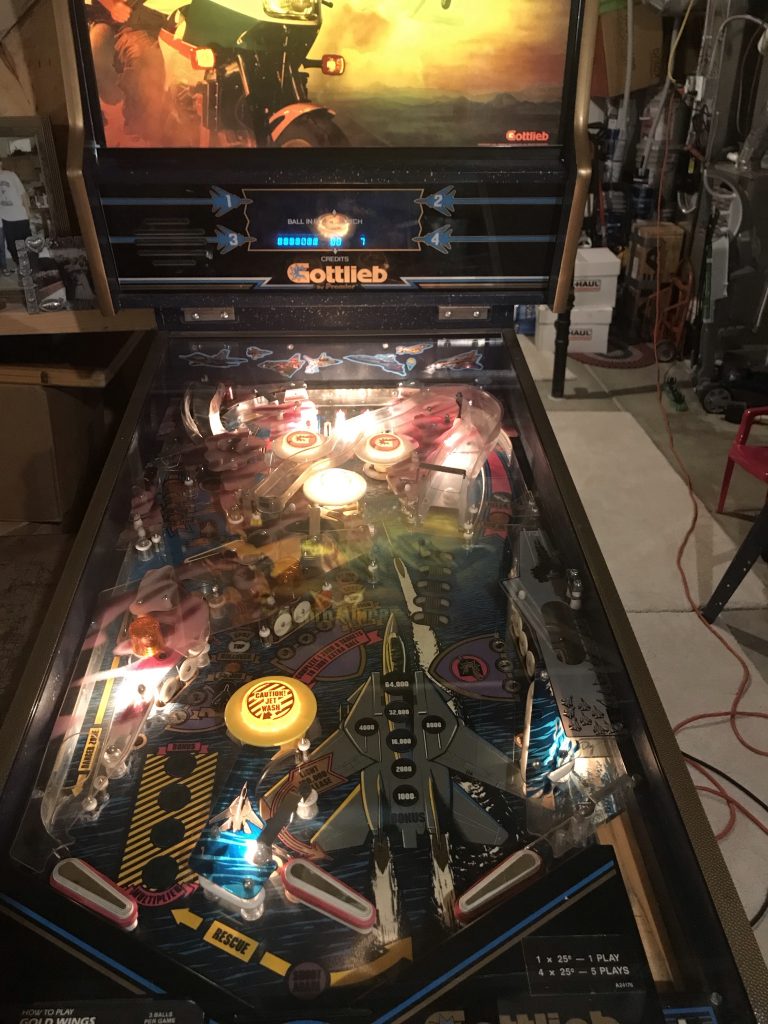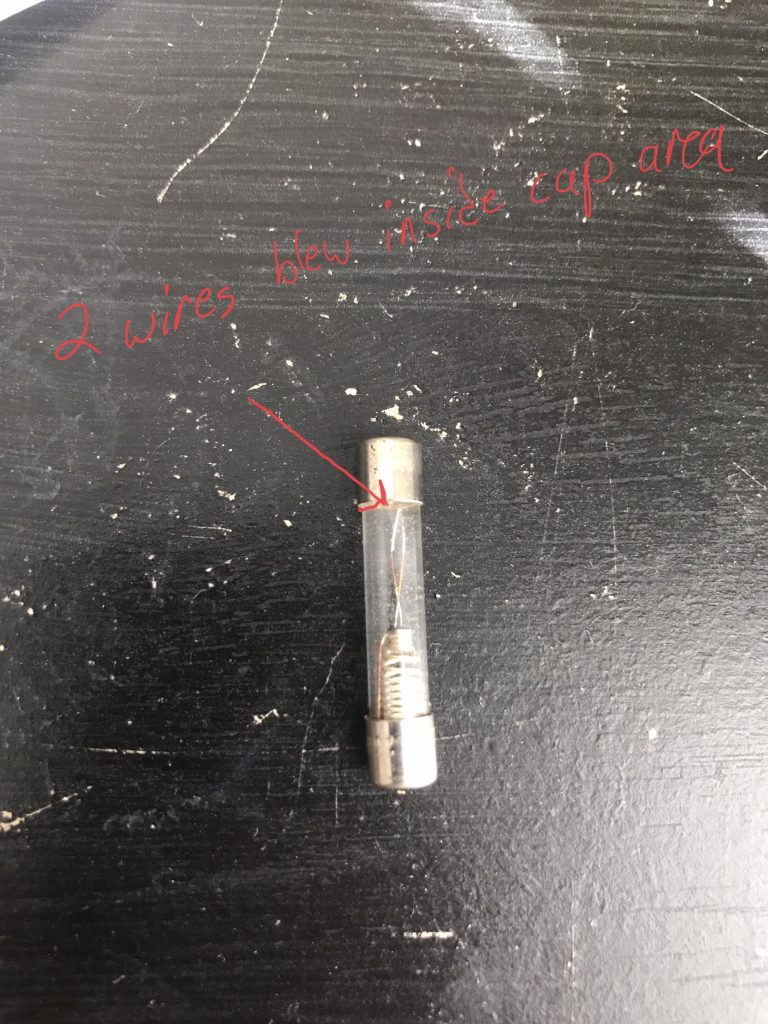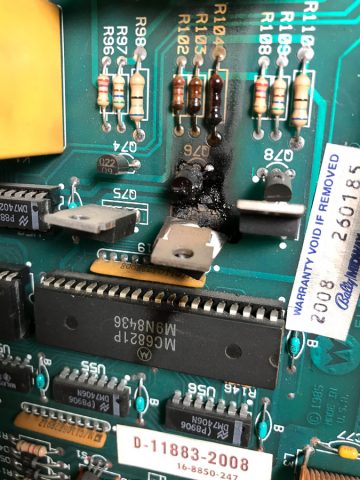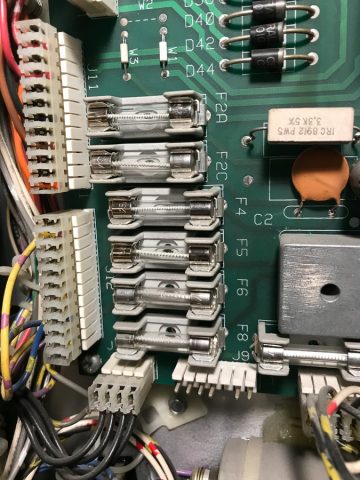Symptom: Machine blows fuse F116
Location: Denver, Colorado.
This World Cup Soccer pinball machine would repeatedly blow fuse F116 during gameplay. Normally in a WPC system fuse F116 is associated with the switch matrix and the opto boards.
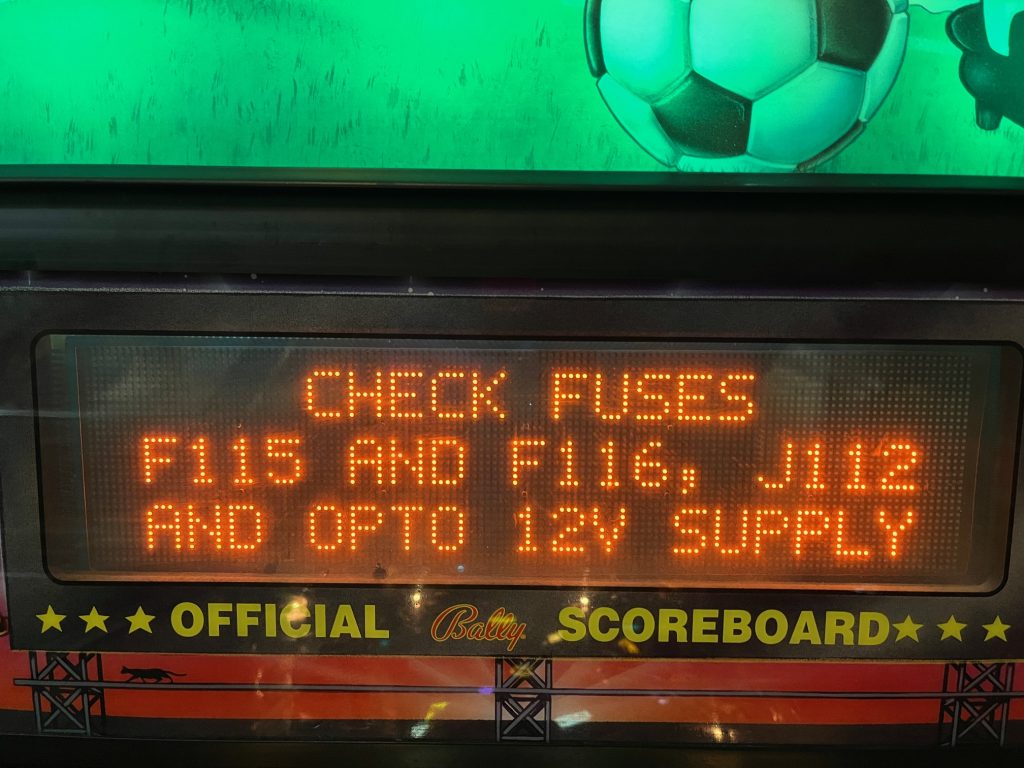
After checking for shorts in the switch matrix and not seeing anything, I replaced the 100uF capacitors located on the two opto interface boards. These capacitors failing is a common problem. But that didn’t solve the problem.
I removed fuse F116 and attached my meter to the fuse holder to measure the current flow. With the machine in attract mode, I was measuring about 1.4 amps. Fuse F116 is a 3 amp slow blow fuse. I started a game and as soon as the soccer ball motor started, the circuit was drawing 5 amps. This would surely blow the 3 amp fuse. It wasn’t obvious, but the soccer motor was powered from this 12 volt circuit.
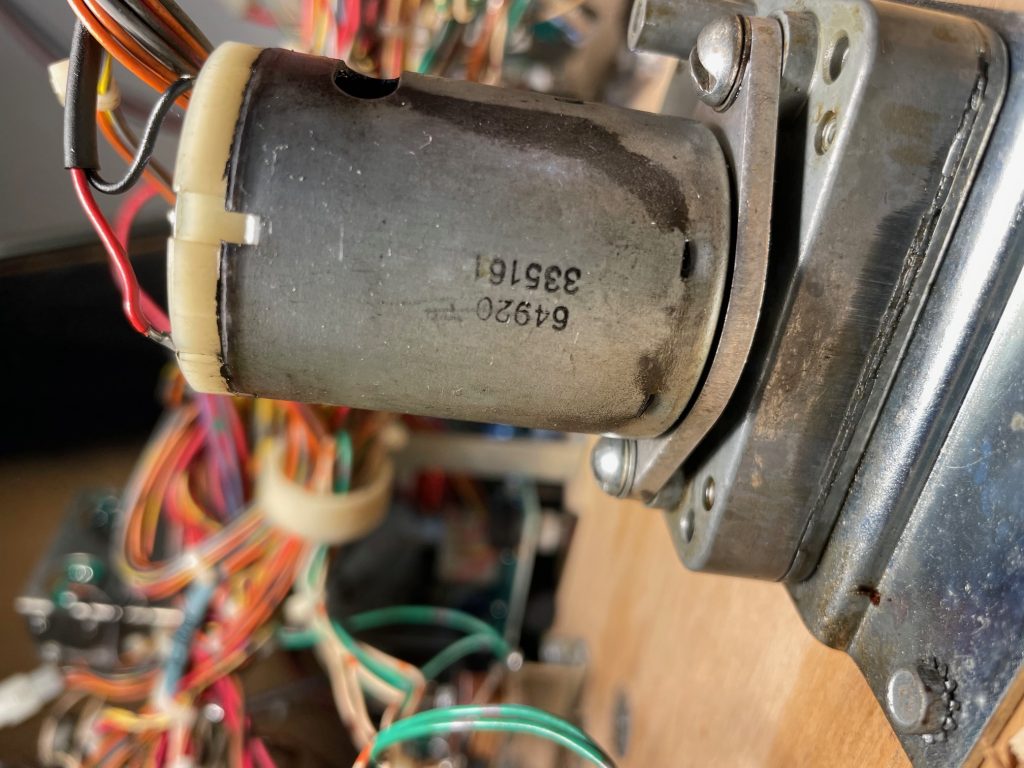
The soccer ball motor had an internal short on one or more of it’s windings. I replaced the motor and measured 2.8 amps in the F116 circuit with the new motor.

